I have an affiliate relationship with Bookshop.org and Malaprop's Bookstore in beautiful Asheville, NC. I will earn a small commission at no additional cost to you if you purchase merchandise through links on my site. Read more on my affiliate page.

Title: The Unidentified: Mythical Monsters, Alien Encounters, and Our Obsession with the Unexplained
Author: Colin Dickey
Genre: History, Science, Pop Culture
Audience: Adult
Format: E-book
My Synopsis:
The Unidentified presents popular modern legends and inexplicable events and then provides the historical and scientific context that helped create each myth. The book becomes an exploration of humanity’s fascination with unsolvable mysteries and our need to know that there is something more in the world than science would have us believe.
My Review:
I’m not quite sure what I expected when I downloaded this book from the library but it’s not exactly what I got. Not that I’m complaining; this book is absorbing. My review keeps turning into a book report because I want to discuss so many of the ideas I just read!
I knew this was nonfiction about the worlds of cryptozoology, alien encounters and other unexplained phenomena. I think I expected it to be more of a collection of those encounters. Instead, the author delivered a few such stories followed by the well-researched history of the surrounding beliefs, that particular time in history, pertinent mini-biographies, and the ways that believers internalize and protect these modern myths.
The author began with an explanation that science and religion co-existed well enough (with some periods of upheaval) until sometime in the 1800s. Citizen scientists were able to observe the world and make important discoveries. Science was fairly accessible to anyone who was interested. But as equipment got more expensive and the body of scientific knowledge grew infinitely larger and more esoteric, science became the purview of universities and well-funded labs. And these institutions effectively shut out the laypeople. Since so many scientific discoveries happened behind closed doors, a new kind of belief system started to take shape.
“The history of the world has been filled with cranks, but a certain breed of crank began to emerge in the nineteenth century, one who borrowed from science when convenient and rejected it when it wasn’t.”
And these “cranks” began to put forth their own wild amalgamations of scientific theory and imagination.
For example, in the late 1800s, spiritualism had a widespread following. Concurrently, a theory arose in the scientific community that there was a lost continent, Lemuria, that sank beneath the Indian Ocean. Eventually, popular culture conflated the two. Stories of surviving Lemurians living in tunnels underneath Mount Shasta in northern California and spreading spiritual enlightenment to believers began to spread. (Incidentally, am I the only person who’s never heard of them?) Dickey details the ways the two beliefs worked together to shape this legend and provides details about the people who had the largest influence on the Lemurian legends. It’s all pretty fascinating. Of course the scientific community eventually rejected/disproved the theory of a lost continent of Lemuria as theories of continental drift and natural selection gained traction but that didn’t matter to true believers.
Perhaps one of the most interesting aspects of the book is Dickey’s explanation for the persistence of so many of these fringe beliefs in the face of so much evidence that completely contradicts it.
“Why does proselytizing sometimes increase, rather than decrease, when a group is presented with unequivocal disconfirmation of their beliefs? Why does a believer in any kind of stigmatized knowledge, when presented with unequivocal evidence to the contrary, reentrench those beliefs further? Festinger, Riecken, and Schachter argue that once you’ve irrevocably begun down a path, it becomes increasingly harder to admit you’re wrong, and you’ll increasingly distort the facts and adopt ever more fantastical ideas rather than change course.”
I found these arguments intriguing given today’s political climate. So many of us want to believe fake news that reinforces our own preconceptions, even in the face of mountains of evidence to the contrary.
“Trying to disprove any of these beliefs—or really, any conspiracy—is frustrating and foolhardy. A scientific fact will quickly be refuted by a flurry of data, often from a wide range of sources; topics will change, and if you debunk one belief, another will quickly be brought up. Soon enough, it becomes apparent that what matters is not what this person believes but that the person believes: the belief itself is the badge, the identity, and the details of it are of minor consequence. These beliefs seem to satisfy the believers in some deep and pleasing way, and that pleasure is more important than their truth or falsity.”
And that may be the aspect of the book that surprised me the most. In my mind, we can broaden studies of people who believe in these fringe sort of paranormal stories, for lack of a better umbrella term, to include believers in conspiracy theories of all types. So I found myself reading about Bigfoot and suddenly highlighting passages that seemed to describe my rabid politically-entrenched Facebook friends. I didn’t expect that, to say the least.
Mr. Dickey disproves and dismisses many popular legends throughout the book but he circles back around in the end to point out that genuinely inexplicable events do happen. For instance, an upstanding woman reported a “meat shower” in Kentucky in the late nineteenth century and a respected town official corroborated her account. No one’s theories, then or now, fit the facts. And society, even those looking for exactly this kind of think, has largely forgotten this occurrence. Why is that? When we’re collectively searching so hard for incidents that put a little magic back into our rational world, why do we discard the truly inexplicable? The author doesn’t profess to know the answer to that question.
This combination of modern mythology, history, biography, and science provides an interesting look into popular fringe beliefs. I recommend this for those with a taste for both the unexplained and real history. It’s a fascinating cultural study that explores many nooks and crannies of history of which I was unaware.
Similar Books:
If you liked The Unidentified: Mythical Monsters, Alien Encounters, and Our Obsession with the Unexplained, you might also like my reviews of
- Get Well Soon: History’s Worst Plagues and the Heroes Who Fought Them by Jennifer Wright
- Stiff: The Curious Lives of Human Cadavers by Mary Roach
- The Immortal Life of Henrietta Lacks by Rebecca Skloot, read by Cassandra Campbell and Bahni Turpin
Purchase:
Buy The Unidentified: Mythical Monsters, Alien Encounters, and Our Obsession with the Unexplained from Malaprop’s Bookstore in Asheville, NC.

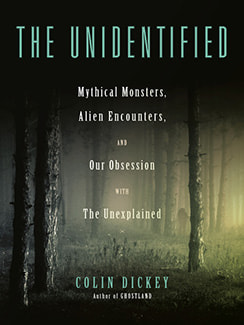
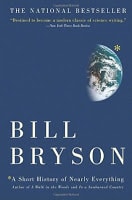

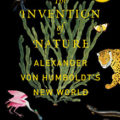
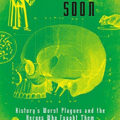
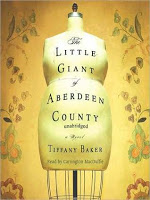

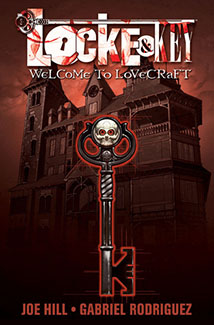
2 Comments
Sounds like a fascinating book! (And I haven’t heard of Lemuria before either, even though I live in California…)
It really was interesting. I was surprised by how much solid history was included. I read this concurrently with Lies My Teacher Told Me and I started getting them a bit tangled.
I’m glad I’m not the only person who hasn’t heard of Lemuria. I thought between my eclectic books and a solid grounding in The X-Files back in the day that I was current on these kinds of beliefs. Obviously not.